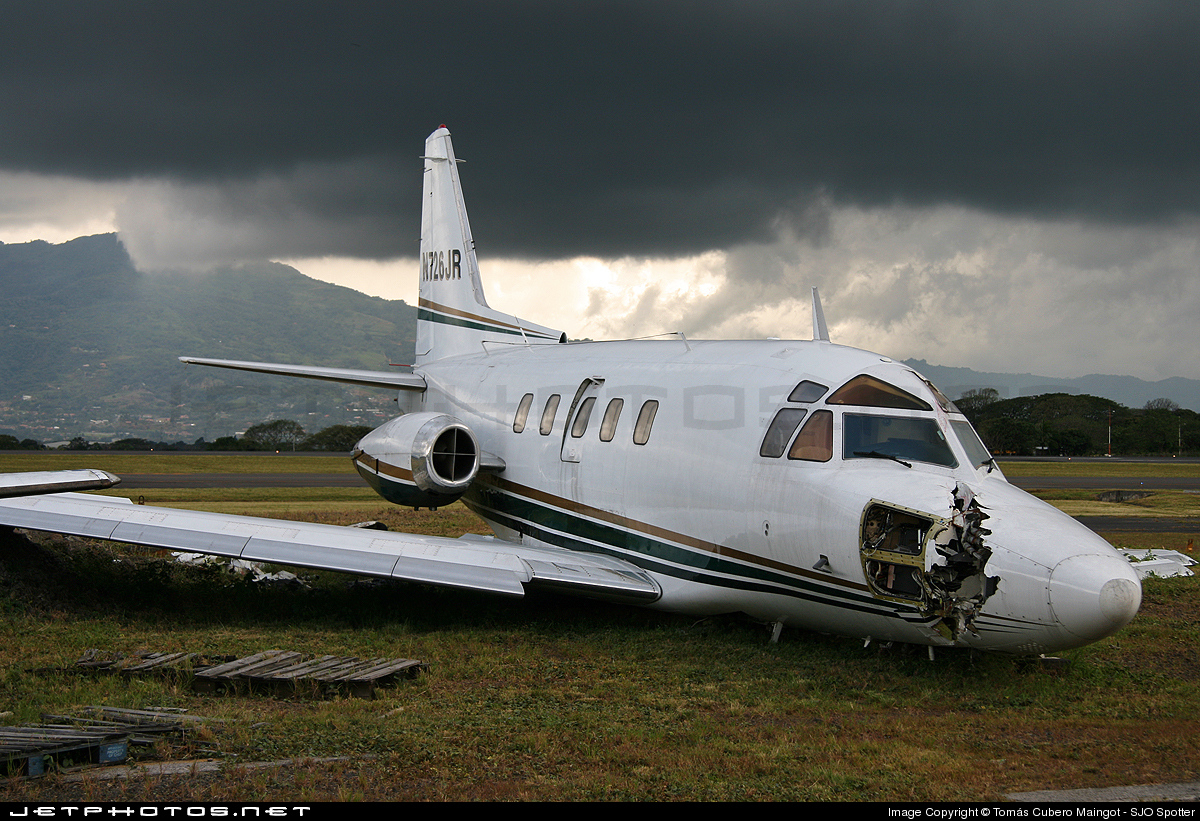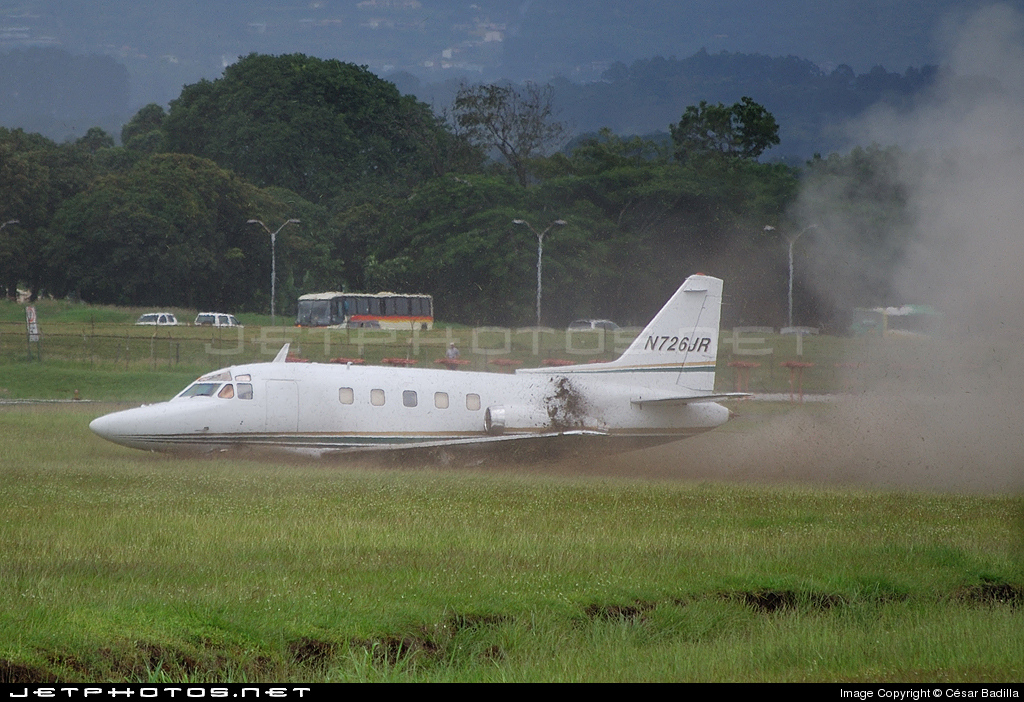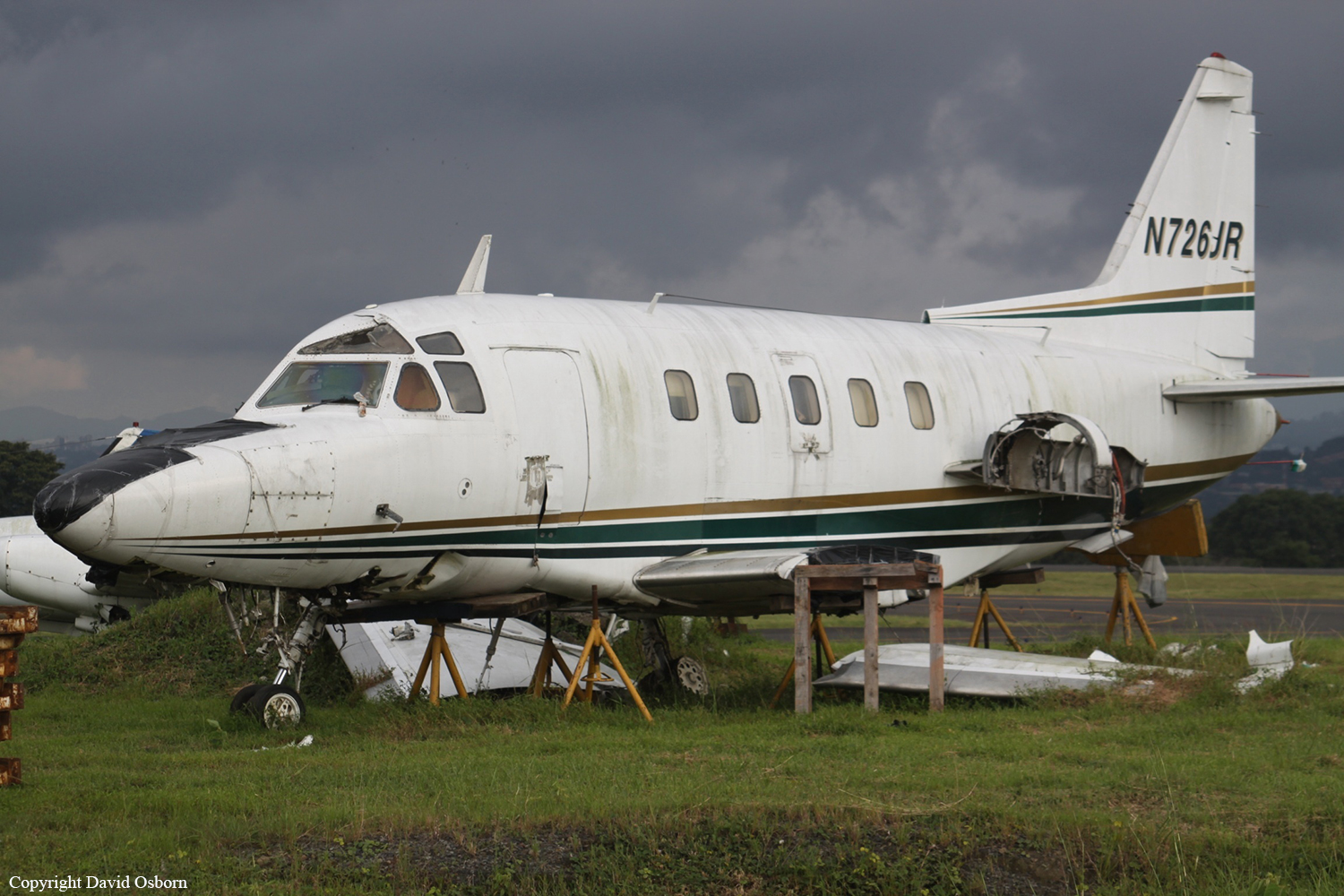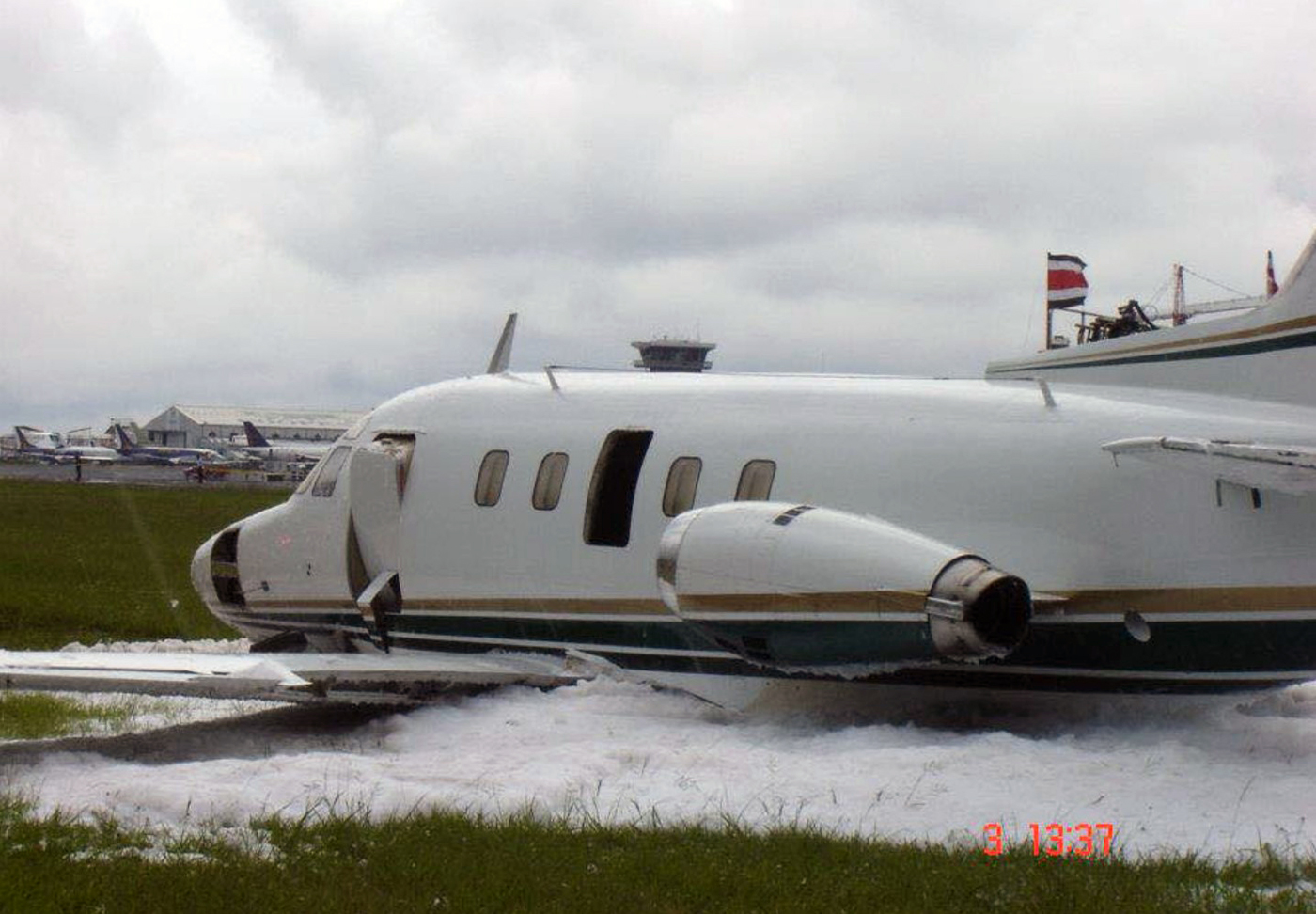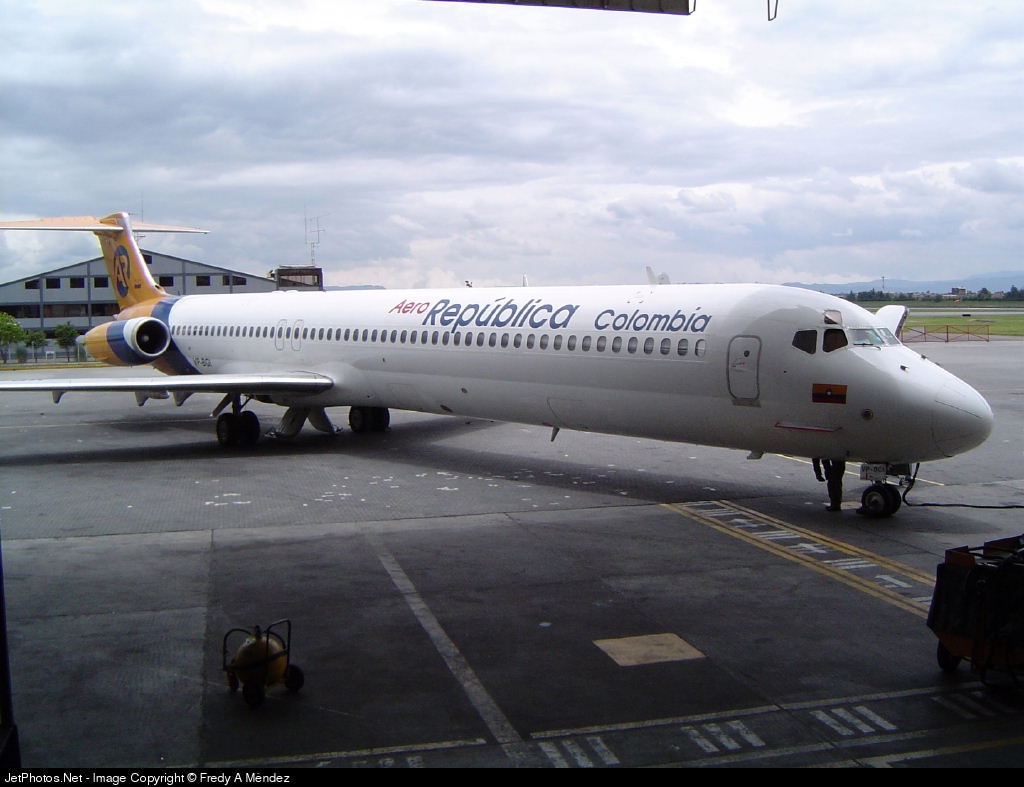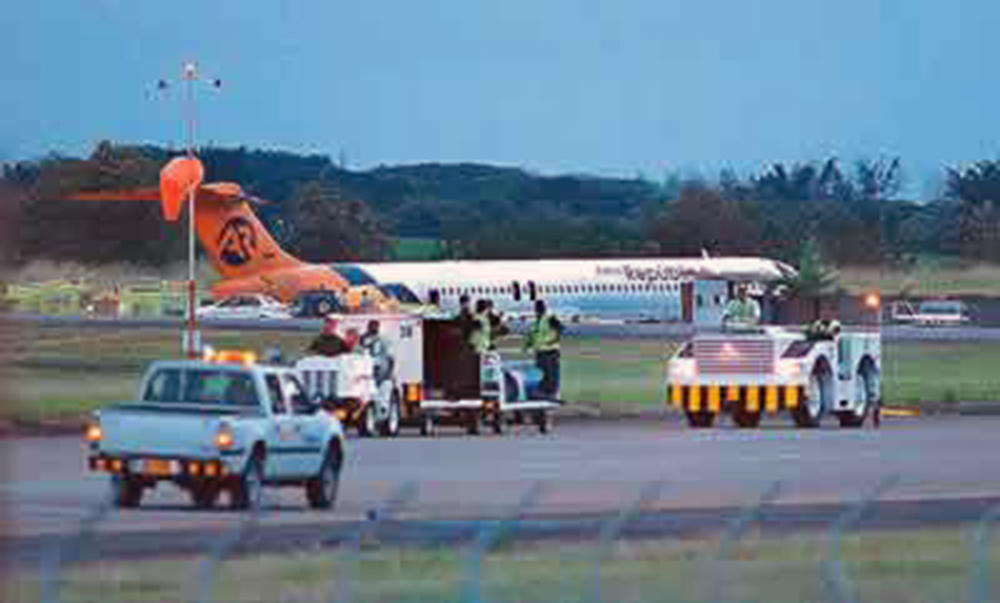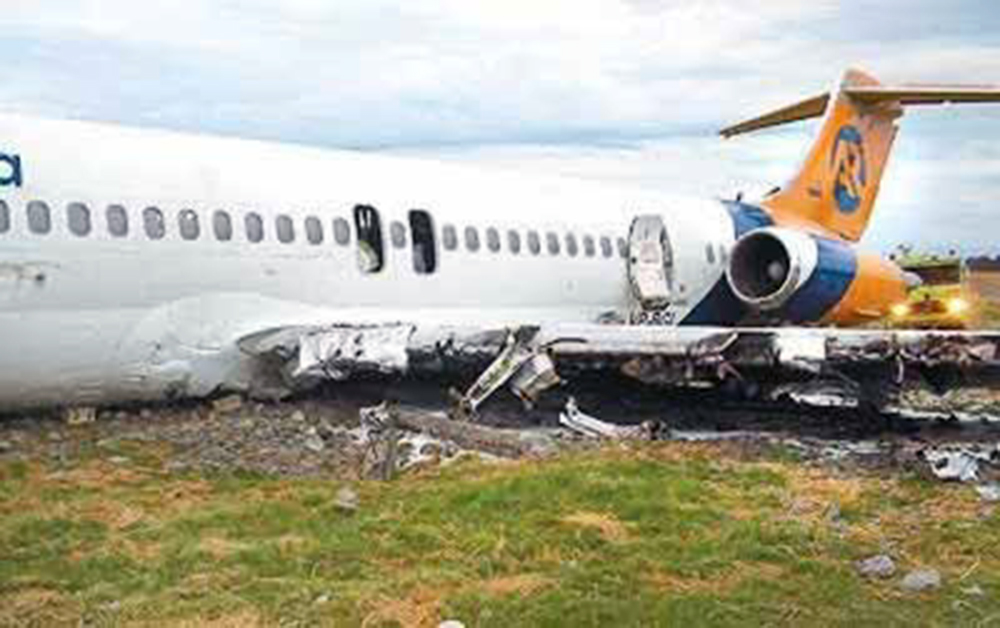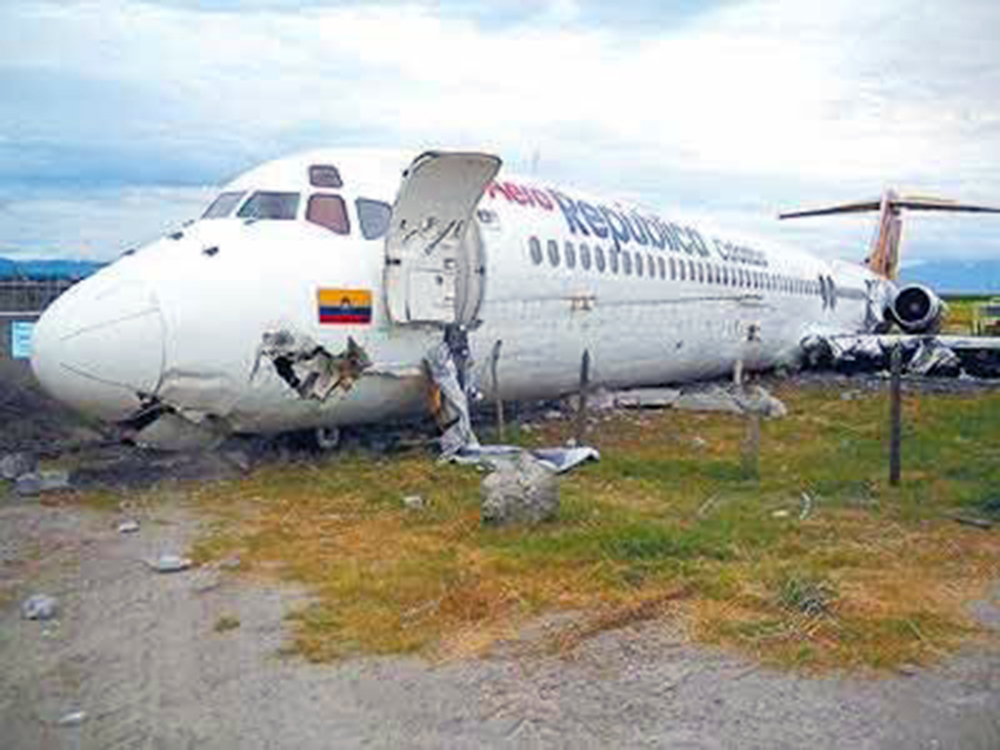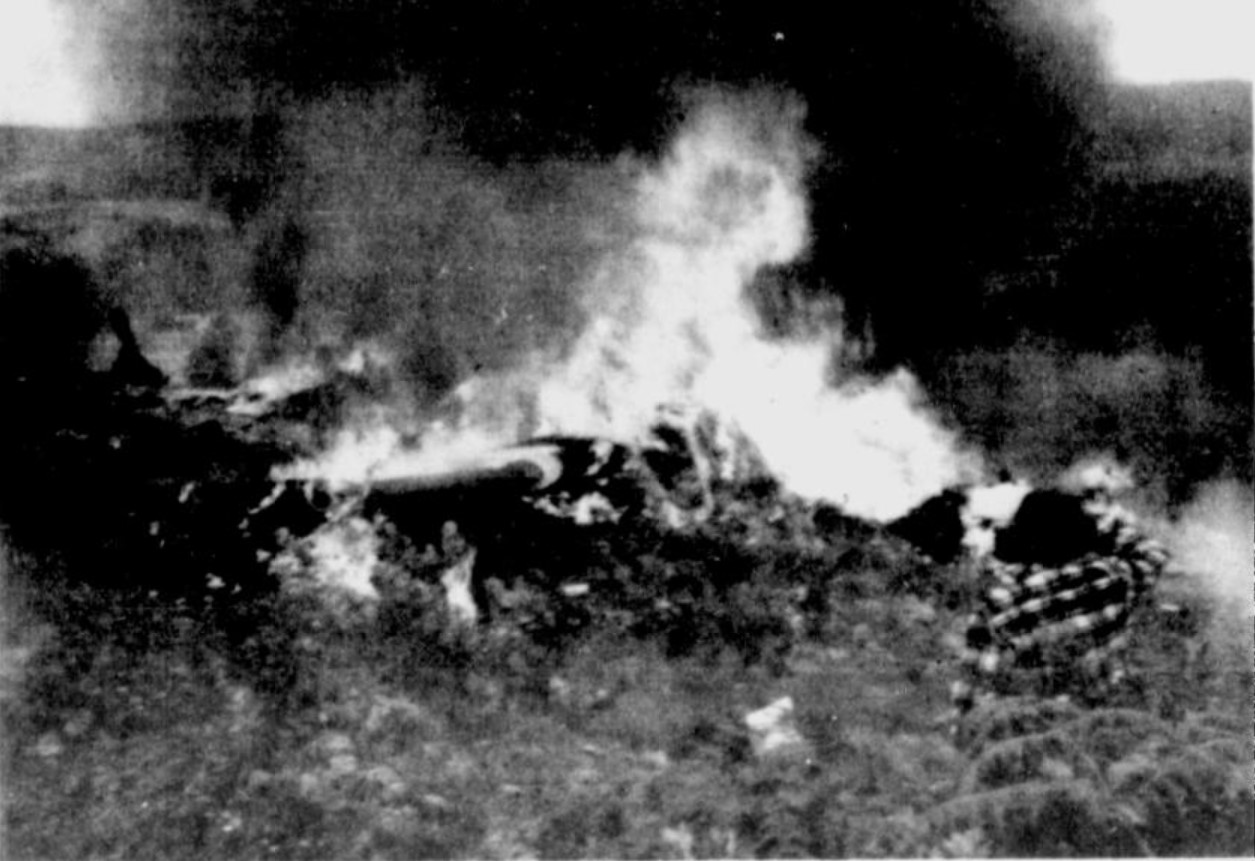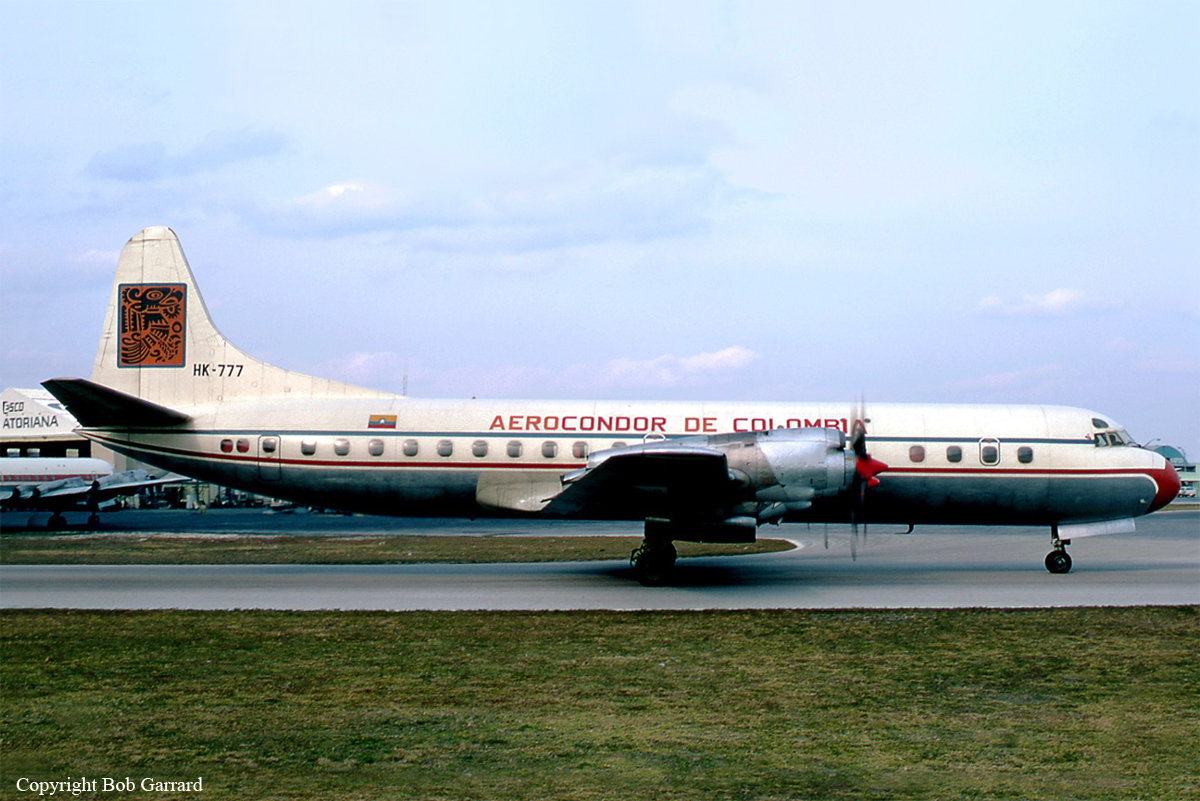Crash of a Rockwell Sabreliner 75 in San José
Date & Time:
Sep 3, 2007
Registration:
N726JR
Survivors:
Yes
Schedule:
San José – Cartagena
MSN:
370-4
YOM:
1971
Crew on board:
2
Crew fatalities:
Pax on board:
4
Pax fatalities:
Other fatalities:
Total fatalities:
0
Circumstances:
During the takeoff roll from San José-Juan Santamaria Airport runway 07, one of the tyre burst. The captain decided to abandon the takeoff procedure and initiated an emergency braking manoeuvre. Unable to stop within the remaining distance, the aircraft overran, lost its undercarriage, hit obstacles and came to rest near the perimeter fence. All six occupants escaped uninjured while the aircraft was damaged beyond repair.

